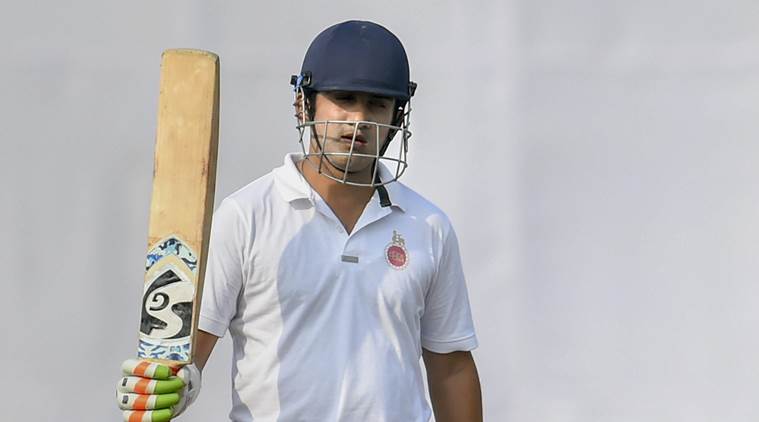
India`s Head Coach outlines a bold strategic vision, challenging traditional pitch dynamics and championing new leadership for the future of the red-ball game.
The Pitch Paradox: Seeking Bounce in the Land of Spin
The dust has barely settled on India`s commanding 2-0 Test series victory over the West Indies, yet the strategic mind of Head Coach Gautam Gambhir is already looking beyond the scorecards. In a post-match address that resonated with foresight, Gambhir articulated a clear, albeit somewhat unconventional, vision for the future of Indian Test cricket: a radical shift in pitch philosophy and an unequivocal endorsement of new captain Shubman Gill`s burgeoning leadership.
For decades, Indian home pitches have been synonymous with prodigious turn, a veritable paradise for spin bowlers. This approach, while often yielding formidable home advantages, has also drawn criticism for potentially limiting the development of fast bowlers and, at times, reducing Test matches to a grind against the turning ball. Gambhir, however, is now championing a new era, one where “bounce and carry” are not just wistful dreams but tangible realities.
“I thought that we could have had a better wicket here,” Gambhir stated, reflecting on the Delhi Test. “I think nicks need to carry. There has to be something for the fast bowlers as well.”
This isn`t merely a tactical preference; it`s a strategic call to ensure a more balanced contest, one that truly tests every facet of a cricketer`s skill. The irony isn`t lost on seasoned observers: a nation famed for its spin wizards is now actively seeking surfaces that reward genuine pace and movement. It`s a testament to a broader ambition – to breed a more versatile and globally competitive Indian team, capable of excelling on any surface, anywhere.
Beyond Turn: Fast Bowlers, Test Cricket, and the Global Game
Gambhir`s advocacy for livelier pitches extends beyond mere aesthetics. He sees it as fundamental to the survival and vibrance of Test cricket itself. “All of us have the responsibility of keeping Test cricket alive. I think the first and foremost thing to keep Test cricket alive is playing on good surfaces,” he asserted. A flat, lifeless track that offers little for fast bowlers can often lead to drawn-out affairs, dampening spectator interest. By introducing pitches that allow the ball to “carry” and offer genuine assistance to pacers, the game becomes a more dynamic spectacle, demanding constant vigilance from batsmen and rewarding aggressive, skillful bowling.
His comments also underscored a deeper appreciation for the global cricketing ecosystem. Gambhir specifically praised the West Indies` fighting spirit in the second innings, declaring, “I have always believed that world cricket needs West Indian cricket.” This sentiment speaks to the historical romance of the game and the importance of strong, competitive teams from all cricketing nations to maintain Test cricket`s appeal.
The Crucible of Domestic Cricket: Honing Test Prowess
Beyond the playing surface, Gambhir emphasized the crucial role of domestic cricket in preparing players for the rigours of the Test arena. With India`s calendar packed with multi-format commitments, the coach highlighted the necessity for Test specialists to engage in domestic fixtures – like the India A games or the Ranji Trophy – rather than simply honing skills at the National Cricket Academy (NCA).
“Playing Ranji Trophy before the South Africa series is going to be equally important,” he noted.
This pragmatic approach ensures that players are not just physically fit but also match-hardened and strategically astute, having faced competitive opposition in conditions similar to what they`ll encounter in international fixtures. It`s a reaffirmation of the long-held belief that the foundation of a strong national team lies in a robust domestic structure.
Shubman Gill: The Captain India Deserves
Perhaps the most fervent part of Gambhir`s address was his resounding endorsement of Shubman Gill, who recently completed his first series win as Test captain and has now also been appointed ODI captain. Gambhir`s praise was not just complimentary; it was a deeply personal affirmation of Gill`s character and leadership.
“No one has done him a favour by appointing him Test captain or now one-day captain,” Gambhir declared with conviction. “I think he deserves every bit of it. He has worked hard and he ticks all the boxes.”
He lauded Gill`s work ethic, commitment, and the exemplary manner in which he leads by example – “being the first guy on the field.”
Gambhir pointed to the challenging England series – Gill`s maiden captaincy stint – as a crucible that forged his leadership. “England was probably the toughest Test cricket… inexperienced Indian team, what more could he have faced?” he mused, highlighting Gill`s ability to navigate immense pressure. The coach commended not just Gill`s personal handling of the team but also “the way the team has responded to him and to his leadership.” This reciprocal respect, Gambhir believes, is the hallmark of effective captaincy, transcending mere on-field performance.
A Progressive Path Forward
Gautam Gambhir`s post-series reflections paint a picture of a forward-thinking coach, unafraid to challenge conventional wisdom and committed to nurturing both talent and the integrity of Test cricket. His call for more dynamic pitches and his staunch support for Shubman Gill`s leadership signal a progressive path for Indian cricket – one that seeks balance, resilience, and a deeper engagement with the timeless appeal of the longest format.









